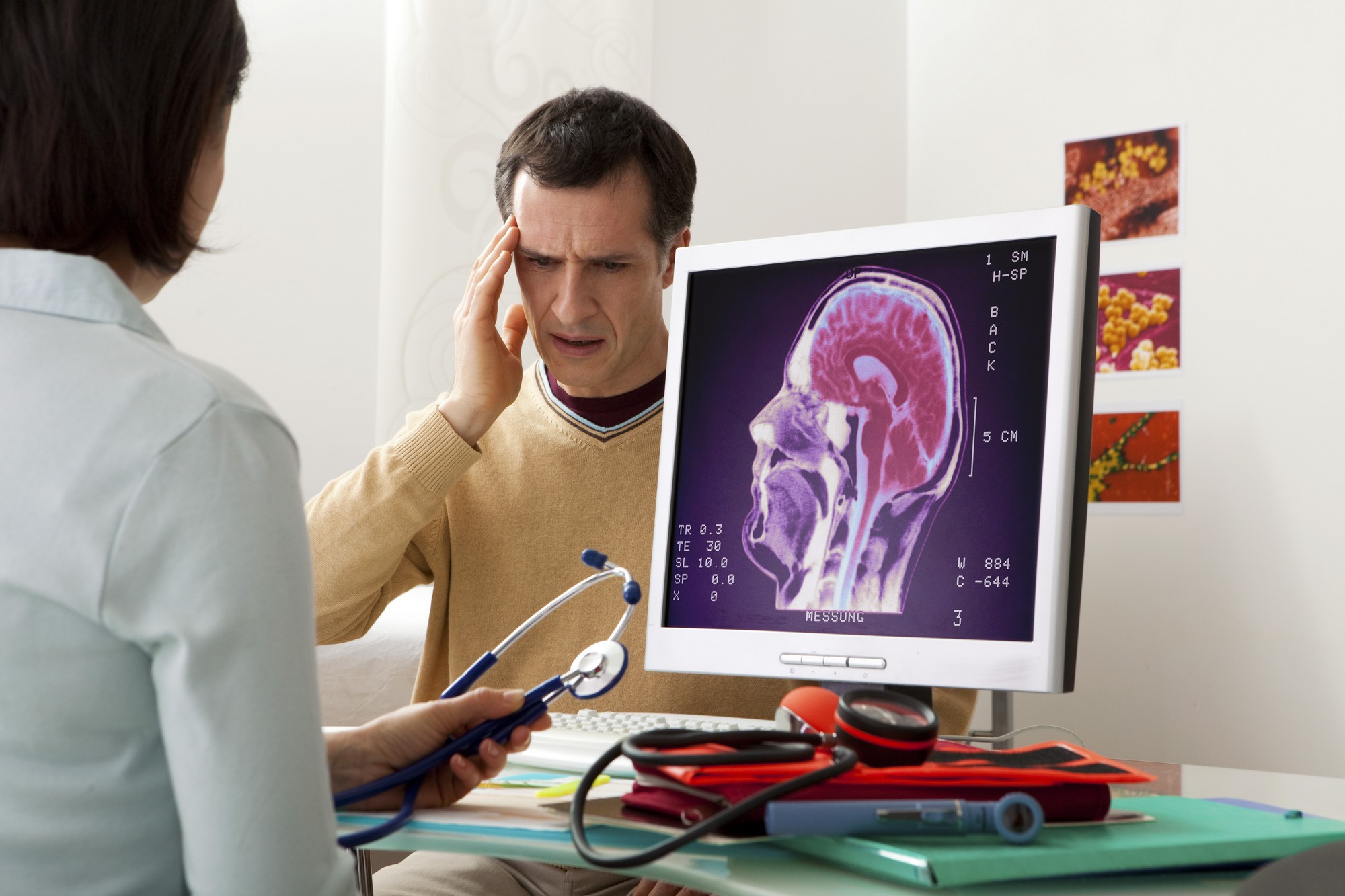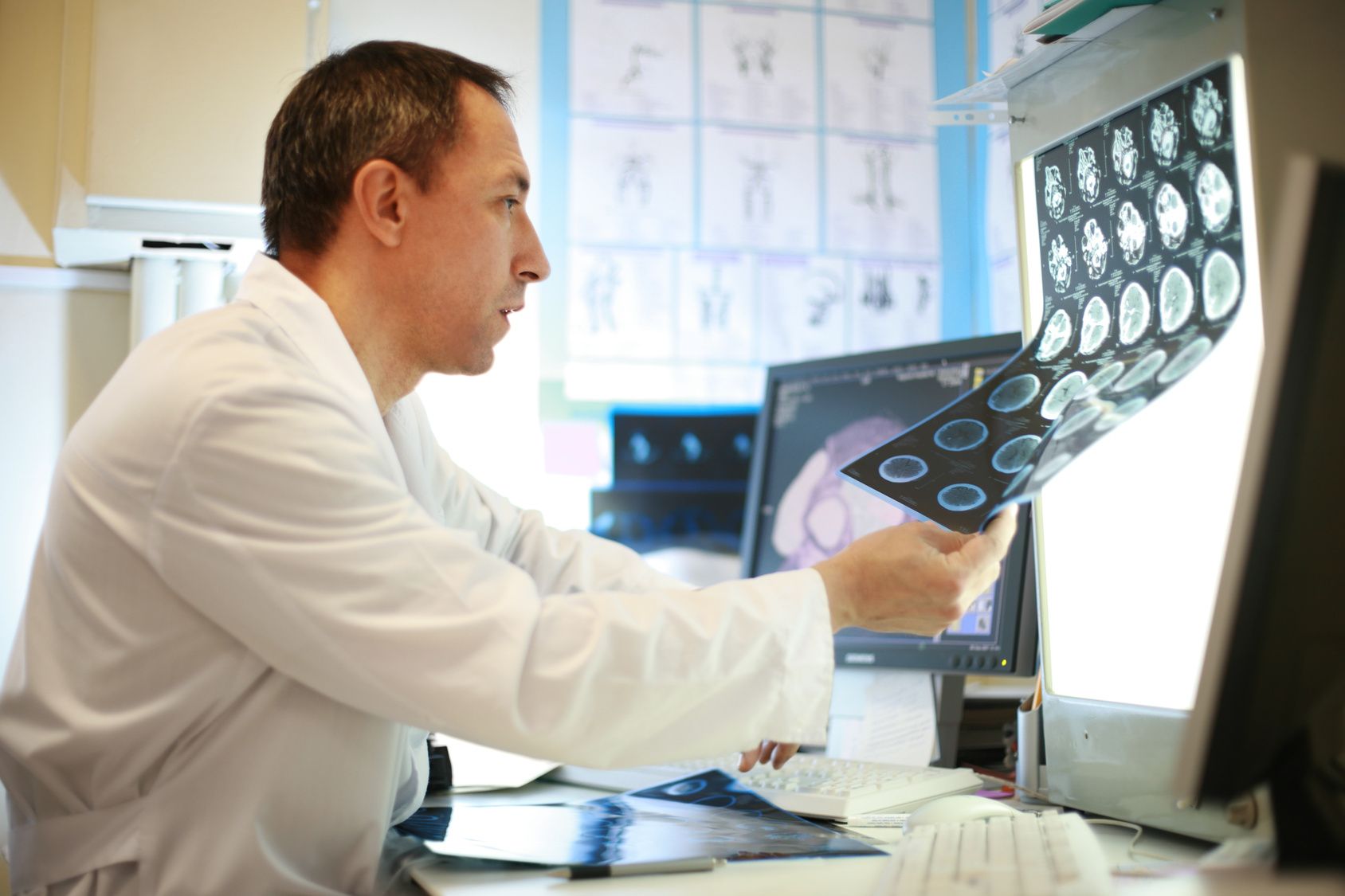
The spinal fluid (cerebrospinal fluid) flows through the brain chambers. If in one part of this body a cerebrospinal fluid accumulates more than the quantity is needed, an increase in ICD occurs.
The content of the article
- Symptoms of increased intracranial pressure in adults
- Causes of increased intracranial pressure in adults
- What is the danger of intracranial pressure in adults?
- How is the intracranial pressure in an adult measure?
- Is it possible to cure increased intracranial pressure?
- How to treat increased intracranial pressure?
- Reduced intracranial pressure in adults
- Folk remedies for intracranial pressure in adults
- Intracranial pressure: reviews
- Video. Intracranial hypertension. Causes and treatment
ICD is measured by units of the mercury. For adults, the norm is 5-7 mm RT. Art.
The normal level of this indicator indicates the correct blood supply to the brain. A sharp increase in ICD is noted with an increase in intra -abdominal pressure due to sneezing, coughing and other sharp contraction of muscles.
Sometimes with such processes, the pressure in the cranial box reaches 50-60 mm Hg. Art. But, quickly returns to a normal level and no neuralgic disorders are detected.
Symptoms of increased intracranial pressure in adults
The main symptom of increased ICD is headache. It is she who brings the patient to the clinic, where the described pathology is revealed.
As a rule, headaches begin in the morning and last most of the day. The intensity of such pain may increase or decrease. Sometimes it is accompanied by a noise in the ears, weakness and vomiting.

The intensity of pain can increase with sharp inclinations of the head and other careless movements
The indirect symptoms of increased ICD include:
- Sharp and intensive setting of sweat
- Darkening, bright flashes and other manifestations of a sudden visual impairment
- The appearance of edema (especially faces) is closer to the evening
- Dark circles under the eyes
- Harsh drops in mood
Causes of increased intracranial pressure in adults
The main reason for the ailment described above is the excessive accumulation of cerebrospinal fluid in the brain chambers. This substance is designed to protect the brain from damage. The cerebrospinal fluid circulates between different parts of the brain and is constantly under pressure.
But, sometimes violations appear in the movement of this liquid. Which leads to its accumulation in one section more than in others. Such a “accumulation” of the spinal fluid in a certain area leads to an increase in intracranial pressure.
What is the danger of intracranial pressure in adults?
People who are faced with a described problem naturally ask the question of whether this problem is dangerous. You can’t answer this question unequivocally. Sometimes ICD is a symptom of a serious illness. Therefore, when identifying this ailment, you need to undergo a comprehensive examination in order to exclude the risks of serious diseases.
The danger of this problem depends on the rate of increase in ICD. With a slow increase in pressure, the soft tissue of the brain can have time to adapt to this and “adapt”. But, if an increase in intracranial pressure occurs sharply, then this can lead to serious consequences.
As for the frequent increase in ICD, this condition will adversely affect the general well -being of a person. In this ailment, sleep is disturbed, fatigue accumulates and apathy appears.

Nausea and vomiting leads to discomfort
Such consequences of ICD appear:
- Dizziness
- Reduced memory
- Reducing concentration at work
- Weakness, drowsiness and malaise
- Pain in the eyes
In rare cases, increased intracranial pressure leads to respiration, slowing heart contractions and other pathologies.
At the beginning of the development of this ailment, all the above symptoms negatively affect the quality of life. But, over time, ICD negatively affects human health. There is a depletion of brain structures, and in extreme cases, even infringement of the hemispheres of the brain with damage to the departments responsible for the heartbeat and breathing.
With symptoms of ICD, it is important to seek help from a neurologist. He is not only able to remove the symptoms that interfere with norms of life, but also help to understand the causes of this phenomenon.
How is the intracranial pressure in an adult measure?
There are several ways to measure ICD in an adult. Invasive methods, when contact with the brain is carried out directly, include:
- Subdural. Its peculiarity lies in the introduction of a special device through a hole made in the cranial box of the patient. This device is called a subdural screw, and it is it that measurements. After the procedure is carried out, the screw is extracted from the skull.
- Epidural. This method is more gentle than subdural. Its essence is that a sensor is introduced between the skull and the hard shell of the brain. For this, the zone of the head where the device will be placed is anesthetized and freed from the hairline. An incision is made on the skin, under which a trepanacin hole is drilled. A sensor is inserted through it for measurements.
- Using an intraventricular catheter. This method is the most accurate and effective. The technique of conducting is similar to the epidural method. A special catheter is introduced into the skull area through the trepanation hole. At the end of the catheter there is a spray can of latex, which contains air. Thanks to the maneuverability and ability of the catheter, to achieve the inner ventricle of the brain, it is possible not only to pump out fluid, but also to reduce intracranial pressure.
- Microsenary. It involves the use of a special sensor, which will measure the pressure and all the indicators will lead to the monitor. This method is widespread in neurosurgery and is used in the course of brain operations.
All these methods require compliance with the conditions of increased sterility and the rules of disinfection, since the risk of blockage of brain fluid tubes and tissue infection in such surgery is quite large.
Non -invasive methods are safe and are used on an outpatient basis. They will not be completely accurate, but continue to be used in medical practice due to the simplicity of their conduct.

The most reliable of non -invasive methods will be transcranial dopplerography
With it, blood flow is evaluated at the place of the large artery entering the direct sinus. In addition, during this method, it is possible to determine the resistance of blood and the state of blood vessels.
With the help of the optoacoustic method, you can visually determine the increase in intracranial pressure in the appearance of the eardrum - the pressure in the snail increases.
Computed tomography makes it possible to only see pressure changes without accurate data.
And another of the ways of non-invasive diagnosis is magnetic resonance therapy. But it is used as an auxiliary method.
Is it possible to cure increased intracranial pressure?
Very often, ICD is not a disease, but is a symptom of other ailments. Therefore, the treatment of this problem depends on the reason that led to its appearance. But, for starters, a person must undergo an examination in order to accurately tie headaches, nausea, fatigue and other symptoms of intracranial pressure with this ailment.
After the ICD is confirmed, the neurologist must choose the treatment individual for each patient. Most often, comprehensive therapy is selected for the treatment of this ailment, which includes taking medications, physiotherapy exercises, physiotherapy and other procedures. In rare cases, surgery may be required.
How to treat increased intracranial pressure?
You need to understand that intracranial pressure rises for a reason. Therefore, in the treatment of this ailment, it is very important to identify the cause. And only after that proceed to treatment.

Like blood pressure, intracranial pressure is not constant
It changes depending on the conditions of the internal and external environment. Therefore, in order to understand whether this problem needs to be needed to undergo a comprehensive examination.
Immediately before prescribing treatment of ICD, the neurologist must decide on the cause and accurately make a diagnosis. This ailment can be a symptom of diseases such as meningitis, encephalitis, brain tumor, etc.
Important: in order to cure hypertension, it is necessary to find the cause of this problem, and not eliminate the symptoms.
If the causes of the ailment described are a tumor or cyst, then surgical intervention is necessary to eliminate the problem. If ICD is caused by neuroinfection, then the doctor should prescribe a course of specialized antibiotics.
All methods of treating this ailment can conditionally be divided into two groups. The first includes those that can help the patient get rid of hypertension symptoms, and the latter can cure the cause of this disease.
The most common medication used in the treatment of hypertension are tablets "Diacarb". This tool is a diuretic can reduce benign intracranial pressure.
Another medication accepted in service with neurologists for the treatment of increased ICD is "Glycerol". Molecules of this agent, falling into the bloodstream, bind water molecules and remove them from the body.
Using Glycerol, you can remove a large amount of fluid from the body, lower intracranial and intraocular pressure.
Magnesia may also be prescribed. Injections of this product expand the vessels and have a calming effect. Magnesia injections are indicated with hypertonicity crisis, which is accompanied by cerebral edema.
Also, drugs that improve blood supply to the brain, nootropic and homeopathic preparations, and vitamins are used to treat increased ICD.
Important: noototor drugs and vitamin-mineral complexes have proven themselves well in the treatment of the described ailment, which was not caused by infectious damage to the brain, tumor or other serious diseases.
The symptoms help relieve and forget about increased intracranial pressure for some time: massage, acupuncture and some folk remedies. But, you need to understand that it is not possible to completely recover from hypertension with the help of such procedures.
Reduced intracranial pressure in adults
According to the statistics of the World Health Organization, every fifth resident developed by the country is suffering from hypotension. Reduced intracranial pressure, as well as an increased, dangerous illness for the body.
If the treatment of hypotension is not undergoing in time, then this over time can lead to a heart attack, withering away of tissues and other serious consequences.

Reduced intracranial pressure can be pathological or physical
In the first case, a course of professional treatment is required. Physical hypotension is much more easily cured. Symptoms of this ailment are:
- The state of constant fatigue
- Feeling of pain in the heart
- Flashes and darkening before the eyes
- Dizziness
- Fainting and drowsiness
Intracranial pressure decreases due to failures in the work of some organs. Often, the cause of hypotension is pregnancy. The restructuring of the female body during this period affects individual organs, which leads to a decrease in intracranial pressure.
Be sure to seek medical help in the following features:
- A sharp decrease in pressure due to opened bleeding
- Periodic losses of consciousness and a fainting state
- Chronic fatigue syndrome, lack of vital energy
In order to identify hypotension, experts must prescribe procedures to identify:
- illegitimate edema of the optic nerve
- venous blood outflow violations
Magnetic resonance and computed tomography of the brain can also be prescribed.
Hypotony is treated by a cardiologist. If the patient is faced with this ailment for the first time, then he is “prescribed” special physical exercises of the aerobic type.
In addition, in the treatment of low intracranial pressure, healthy sleep and a good rest are very important. It is advisable to visit the pool and daily perform a special set of exercises.
If the lowered ICD has already been observed in the patient, then it is necessary to supplement the course of physical exercises by taking drugs based on substances that stimulate blood flow.
Folk remedies for intracranial pressure in adults
As mentioned above, it is impossible to cure an increased ICD using folk remedies and alternative medicine procedures. However, with their help you can remove the symptoms of this ailment.
Most of the herbs that are used to prepare traditional medicine for the treatment of ICD can be bought at a pharmacy.

In addition to the fact that decoctions and infusions have a favorable effect on the symptoms of this ailment, they are able to strengthen the body as a whole
In order to get rid of headaches and hypertension, you can use a compress of alcohol and camphor oil. The ingredients are mixed in equal proportions and applied to the head before bedtime. To enhance the effect, the head can be wrapped with a scarf.
Another excellent remedy is a decoction of mulberry branches. For its preparation, crushed twigs (20 g) are laid in the pan and poured with a liter of water. You need to drink such a decoction one cup per day before meals.
You can use clover for the treatment of ICD. The inflorescences of this plant are laid in a jar (1 liter) to the neck and poured with vodka. You can drink the infusion in a week of 10 ml. It can be diluted with water.
Another remedy for headaches in ICD is inhalation with a laurel sheet. To do this, the leaves of the laurel (30 pcs.) Pour boiling water (1 liter) and inhale the steam emanating from them. It has a lot of useful volatile compounds that improve cerebral circulation.
Lemon and garlic can also be used to combat hypertension. To do this, pass a lemon (2 pcs) and garlic (2 slices) through a meat grinder, mix the gruel until smooth and poured with warm water (2 liters). You can drink this infusion in a day, 30 ml before bedtime.
If increased intracranial pressure provokes headaches and does not allow to fall asleep, then you can use lavender oil. It is heated to room temperature and rubbed into whiskey.
Birch juice also helps well from increased ICD. This tool is especially useful during the collection. But, if you could save it for the winter, you can also use it. There are no restrictions on the use of birch juice.
The decoction of nettles and a series can be used not only as a general strengthening agent, but also as tea from hypertension. For this, these herbs are mixed in the same proportions and poured with water. For 30 grams of gathering, a liter of water is needed. Drink such an infusion (50 grams) daily in the morning.
The intracranial pressure of the bathtub with a decoction of linden is well reduced. A dried fake color (4 glasses) must be poured into the bucket and pour water. The infusion is poured into the bath. For a greater effect, such a bath must be used in a sedentary form.
Increased intracranial pressure is a dangerous disease that requires timely diagnosis. With the help of folk remedies, you can not only deal with unpleasant symptoms of ICD, but also very successfully treat the disease.
Intracranial pressure: reviews
Irina. In my adolescence, I had terrible headaches. An examination was undergoing, an increased intracranial pressure was diagnosed. We prescribed some injections, now I don’t remember. The pains have passed and still have not returned. I don’t know what helped, growing up or those injections.
Olga. I also suffer from this ailment. Doctors said that the cause is an insufficient outflow of blood from the brain. I drink pills and put a dropper with Cavinton. But, you can’t recover from this. You can only reduce the manifestation of symptoms.
